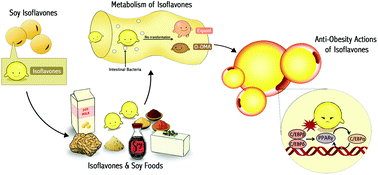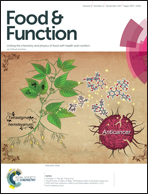Anti-obesity molecular mechanism of soy isoflavones: weaving the way to new therapeutic routes
Abstract
Obesity is ringing alarm bells globally. Advances in food science and nutrition research have been devoted to identifying food components that exert anti-obesity effects, as well as investigating the molecular mechanisms by which they modulate the progression of obesity. Soy foods have attracted much interest as high-protein components of the human diet and as unique sources of isoflavones. As they have similar chemical structures to endogenous estrogens, isoflavones are believed to interact with intracellular estrogen receptors, which results in reductions in the accumulation of lipids and the distribution of adipose tissue. Both in vitro and in vivo studies have revealed other signaling pathways in which isoflavones are involved in the inhibition of adipogenesis and lipogenesis by interacting with various transcription factors and upstream signaling molecules. Although the biological mechanisms that cause the biphasic effects of isoflavones and various controversial results remain unknown, it is noteworthy that isoflavones exhibit pleiotropic effects in the human body to regulate metabolism and balance, which may potentially prevent and treat obesity.



 Please wait while we load your content...
Please wait while we load your content...